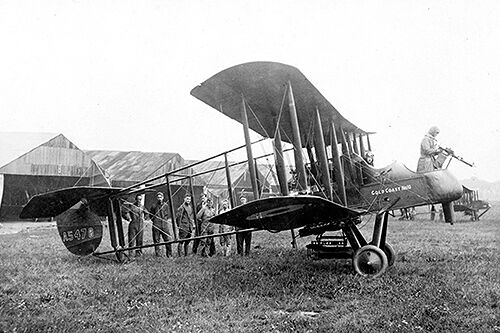
The danger of flight
Published:
Categories:
Serving as aircrew in the Royal Flying Corps (RFC) was one of the most dangerous roles in the First World War. Aviation was still a very new science, training was minimal, safety systems were basic to non-existent, and the aircraft themselves incredibly basic and fragile.
In fact, History Revealed magazine claims the role as a pilot in the RFC was the most dangerous job in the war, with 8,000 men dying during their 15 hours of pilot training.
Once in battle, the pilots were poorly armed in relation to the enemy and flew without parachutes, the most basic safety device. In fact, the magazine claims the average life expectancy of a RFC pilot was just 18 airborne hours.
The aircraft these brave pilots took to looked nothing like the aircraft of today. The biplanes, with a fuselage of wood and canvas and open to the elements, left the pilots vulnerable to cold, low oxygen at altitude, and structural collapse or fire if struck by enemy artillery or small weapons fire.
Additionally, the pilots had no means of communication with other pilots or crew members except for hand signals, making coordination between the pilot and observer or gunner practically impossible when under attack.
Particularly in the early years of the war, British airmen faced better armed German crews. British pilots often flew with only a pistol or rifle; sometimes they armed themselves with bricks to attack the enemy at close range. In the early days, bombs were dropped over the side of the aircraft! This disadvantage increased when the Germans were first to fly with mounted machine guns timed not to strike the planes' propellers.
By the end of the war, British and German aircraft were more evenly matched and aviation technology leapt forwards, setting us on the path to today's aircraft.